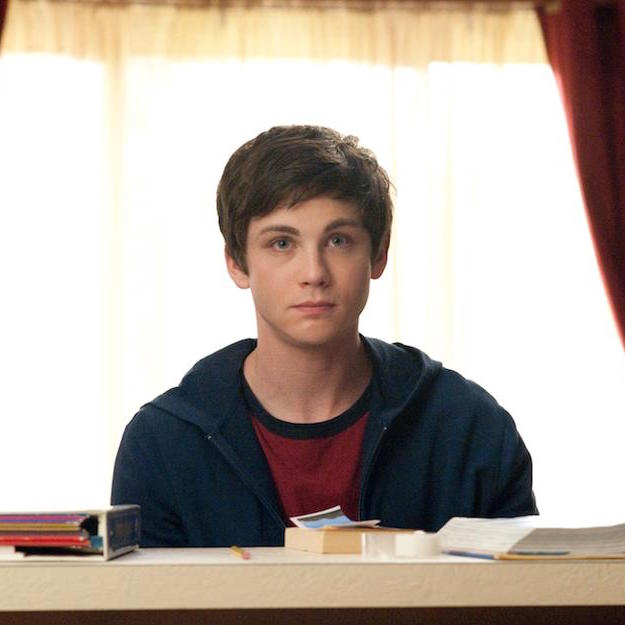8 Movie Characters That Show These 6 Classic PTSD Symptoms
Editor's Note
The following post contains spoilers for the movies mentioned below.
I sometimes joke to my friends that in order to be a Disney hero, a character must be an orphan — or at the very least have lost one parent. (Don’t believe me? Think about Simba from “The Lion King,” Anna and Elsa from “Frozen,” Hiro from “Big Hero 6,” Nemo from “Finding Nemo,” Mowgli in “The Jungle Book,” etc.)
• What is PTSD?
Why is that?
I think it’s because we like stories about human resiliency. We are drawn to stories of heroes who overcome trauma because it gives us hope that we can overcome the trials in our own lives.
For example, seeing Harry Potter rise, again and again, each time Lord Voldemort tries to kill him can give us the stamina to continue on when things get hard. Watching Katniss Everdeen take down the Capitol while barely holding herself together shows us that you can be fierce and vulnerable at the same time.
Though these characters aren’t given official PTSD diagnosis in the movies, we can still learn a lot about how trauma and PTSD symptoms manifest by their actions. With the help of the Diagnostic and Statistical Manual of Mental Disorders (DSM–5), I’ve listed eight movie characters who exhibit six classic symptoms of PTSD. Did we miss any characters you can think of? Let us know in the comments.
1. Nightmares and Flashbacks
Katniss Everdeen in ‘The Hunger Games’

“The Hunger Games” is a dystopian series that centers on Katniss Everdeen (Jennifer Lawrence) as she tries to survive the government-sanctioned Hunger Games, where two child tributes from each of the 12 districts fight to the death on television for the rest of the nation to see.
One of the major criteria for getting a diagnosis of PTSD is exposure to actual or threatened death. In the first movie, Katniss must witness deaths of multiple tributes, including her friend and ally Rue (Amandla Stenberg). Even after she leaves the arena, she bears witness to war-time violence like floggings, mass murders and public executions.
This is a lot of trauma to experience as a young person (she’s only 16 in the first movie), and understandably we see her experience flashbacks and nightmares about being in the arena again, two classic symptoms of PTSD.
Charlie Kelmeckis in ‘The Perks of Being a Wallflower’

“The Perks of Being a Wallflower” is a coming-of-age story based on the novel of the same name by Stephen Chbosky. The movie follows Charlie Kelmeckis (Logan Lerman) as he navigates his first year of high school.
When a person with PTSD encounters a situation that reminds them of the traumatic event(s) they experienced in some way, it’s common to experience a flashback. This is something we see Charlie struggle with a lot in the movie.
For example, when Charlie kisses his friend Sam (Emma Watson), she touches his thigh and he experiences a flashback of his Aunt Helen. At the end of the movie, we learn Aunt Helen molested Charlie growing up. The experience of Sam touching his thigh triggered feelings of his past sexual abuse.
In addition to visual flashbacks, people with PTSD can often have distorted views about the cause or consequences of the trauma they lived through. In Charlie’s case, he blames himself for his aunt’s death in a car crash, confiding in his sister that he may have wanted her to die. Though Charlie clearly did not cause the car accident, he blames himself anyway because he had negative thoughts about his abuser.
2. Depersonalization
Tonya Harding in ‘I, TONYA’

“I, TONYA” is a biographical comedy based on figure skater Tonya Harding and her connection to the 1994 attack on rival skater Nancy Kerrigan. Though some have criticized the film’s use of dark humor in depicting domestic violence, others have praised the way the film spotlights the cycle of domestic abuse.
Characters in the movie are known for “breaking the fourth wall” and talking to the audience. In an interview with the New York Times, actress Margot Robbie (who plays Harding) said when her character does this, viewers see how detached she is from her trauma.
We wanted to emphasize that [domestic abuse] is a cycle and this is so routine for her, because it’s happened her whole life. She can emotionally disconnect in that moment and speak to the audience, completely matter-of-factly.
Depersonalization, or a persistent experience of feeling detached or like an “outside observer” of the things that happen to you, is a symptom many people with PTSD will experience. This is a common self-protective response to repeated trauma. In the movie, Harding is so desensitized to her trauma that it’s as if she’s “numb” to it and it doesn’t affect her anymore.
3. Persistent Avoidance
Tony Stark in ‘Iron Man 3’

“Iron Man 3” follows the story of Tony Stark (Robert Downey Jr.), a genius inventor and CEO of Stark industries, in the months after the battle of New York (featured in “The Avengers” movie).
At the beginning of the movie, we see him struggle with PTSD symptoms like insomnia and panic attacks. One of the ways he copes with the trauma he experienced in the alien invasion is by avoiding the memories altogether. When he can’t sleep, he builds dozens of new Iron man suits, which causes relationship problems with his girlfriend Pepper Pots (Gwyneth Paltrow).
According to the DSM-5, a classic behavior of folks with PTSD is avoiding people, places, objects and situations that could arouse thoughts or feelings related to a traumatic event. In addition to trying not to think about what happened, Tony also avoids certain places in New York that remind him of the battle.
4. High Reactivity and Irritability
Harry Potter in ‘Harry Potter and the Order of the Phoenix’

The Harry Potter series centers on Harry Potter (Daniel Radcliffe), who fights against Lord Voldemort (Ralph Fiennes), a dark wizard who desires to become immortal and rule over wizards and Muggles (non-magical folk) alike.
Based on this description, you might guess this series is basically a long story about trauma. I mean, the boy spends his life being pursued by an evil wizard hell-bent on ending his life. If that doesn’t count as trauma, I don’t know what does!
Throughout the series, Harry experiences a lot of PTSD symptoms like flashbacks, nightmares and paranoia, but one symptom he experiences in particular addresses an area of PTSD we don’t always talk about — high reactivity and irritability.
According to the DSM-5, one of the diagnostic criteria for PTSD is “irritable behavior and angry outbursts.” Harry’s own angry outbursts are most evident in the fifth installment of the series, “Harry Potter and the Order of the Phoenix.”
According to some, Harry becomes “Emo Harry” as he struggles to regulate his emotions — particularly his anger. Throughout the movie we see him blow up again and again, usually at his friends Ron and Hermione (Rupert Grint and Emma Watson).
Though his friends don’t always know how to respond his anger, viewers understand a lot of it is because Harry refuses to talk about what happened at the end of the prior movie — when Lord Voldemort murdered his friend Cedric Diggory (Robert Pattinson). Many people with PTSD struggle to talk about their trauma, and as a result, anger can be a common response to unprocessed trauma.
Lieutenant Dan in ‘Forrest Gump’

“Forrest Gump” is an American comedy-drama about Forrest Gump (Tom Hanks), a man from Alabama who unexpectedly influences major 20th-century historical events in the U.S. In the movie when Forrest enlists in the U.S. Army, he meets Lieutenant Dan Taylor (Gary Sinise). When their platoon is ambushed, Forrest saves Lieutenant Dan, who loses both of his legs.
Like many veterans who come back from war, Lieutenant Dan struggles with the impact of trauma. When Forrest runs into Lieutenant Dan later in life, he finds a cynical man who is easily angered and engages in self-destructive behavior. Lieutenant Dan struggles with substance abuse, something many folks with PTSD can struggle with as well.
Lieutenant Dan displays his anger poignantly when he and Forrest struggle to get through a hurricane while on a shrimp boat. Lieutenant Dan, reckless and full of anger, challenges God to sink the boat.
5. Derealization
Peeta Mellark in ‘The Hunger Games: Mockingjay’

Katniss isn’t the only one who experiences PTSD symptoms in “The Hunger Games.” In the third and fourth installments of the movie franchise, “The Hunger Games: Mockingjay” parts one and two, her romantic interest Peeta Mellark (Josh Hutcherson) is psychologically tortured by the Capitol using a method called “hijacking.”
Hijacking is a fear conditioning and memory alteration torture tactic using the venom of genetically engineered wasps called tracker jackers. When Peeta is captured by the Capitol, they begin to show him footage of him and Katniss at the first Hunger Games and inject him with tracker jacker venom. The venom makes Peeta associate Katniss with fear, driving him to want to kill her — the girl he has spent his life loving. Not only is this the Capitol’s attempt to torture Peeta, but it’s also an attempt to psychologically torture Katniss, who is the symbol of the rebellion.
According to the DSM-5, some folks with PTSD may feel like the world around them is unreal, dreamlike, distant or distorted. This is called derealization, and it’s something Peeta experiences. Even after the hijacking torture has stopped, Peeta is left unsure of what is real and what is not. While Peeta is recovering, he plays a game called, “real or not real?” to help him understand what memories are real and which ones have been altered by the hijacking.
6. Distorted View of Self
Rapunzel in ‘Tangled’

“Tangled” is a Disney movie based loosely on the Rapunzel fairy tale. The movie features the long-lost princess Rapunzel (Mandy Moore), who is locked in a tower by the controlling Mother Gothel (Donna Murphy) in order to keep Rapunzel’s magical hair a secret. At age 18, Rapunzel leaves the tower against Goethel’s wishes with Flynn Rider (Zachary Levi).
Because Goethel was manipulative and emotionally abusive towards Rapunzel growing up when she finally leaves the tower (after being held prisoner there her whole life) she is plagued by the belief that she’s a horrible daughter for going against her mother’s wishes. Despite the fact that she is legally an adult at age 18 and there’s nothing wrong with exploring her independence, she struggles with negative beliefs and expectations about herself due to the trauma of growing up with a controlling mother. According to the DSM-5, many people with PTSD struggle with persistent and exaggerated negative beliefs or expectations of themselves.
By the end of the movie, Rapunzel confronts her mother, and though her voice shakes, she stands up for herself in the face of her abuser — which is something many children of emotional abuse are never able to do. Though not altogether realistic, seeing Rapunzel face her mother can still be encouraging for survivors of childhood emotional abuse, showing them it is possible to be free from an abuser and give them hope for recovery.
What characters and symptoms did we miss? Let us know in the comments below.
For more from our #TraumaSurvivors community, check out the following stories:
Header image via “The Hunger Games” and “Iron Man” Facebook pages

